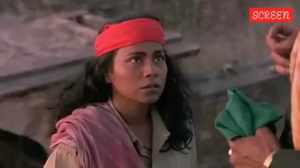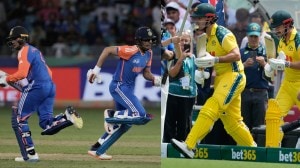Software spells freedom for blind
A technology innovation by the Computer Vision and Pattern Recognition (CVPR) unit of the Indian Statistical Institute (ISI) in Kolkata has ...

A technology innovation by the Computer Vision and Pattern Recognition (CVPR) unit of the Indian Statistical Institute (ISI) in Kolkata has finally borne fruit and is now touching the lives of thousands of visually impaired students all over the country.
‘‘It offers freedom from dependence on human assistance while using computers,’’ says a CVPR teacher. The software was initially devised in Bengali and Hindi and further upgradation by IIT, Kharagpur, has led to its multilingual usage. Today, it is available in 12 Indian languages.
|
How it works
|
|
According to CVPR researchers, the Optical Character Recognition software allows printed documents to be scanned and transferred into images. Similarly, the blind can type on the Braille keyboard to produce the images (grapheme) that correspond to a set of speech output (phoneme) to produce sound bytes. The speech output enables the blind to understand if his/her composition on the screen is right or wrong and make amends accordingly. WEBEL has made several value additions to the software like PC-based games for the visually impaired and PC-based quiz or MathBraille that converts mathematical symbol into Braille. (ENS) |
The technology enables the blind to access an interactive computer technology that helps them in writing and reading of texts on computers independent of human assistance. It throws up immense opportunities for them starting from printing of books to writing texts.
The technology was developed after years of research by Professor B.B. Chowdhury, head of the CVPR unit, and his associates Dr Umapada Pal, Dr Swapan Parui and Utpal Gorai. While it was devised a couple of years ago, the actual application began only recently. ‘‘Very soon, they would be logging in for a chat session, independent of anyone’s help,’’ says a CVPR researcher.
S.K. Mitra, the managing director of WEBEL — the government subsidiary that provides the package to schools to blind schools — says that over the past one year, as many as 79 blind schools in India have benefited from it. The technology has been made available to 20 other states. ‘‘We are going to make it available throughout the country,’’ says Mitra.
He adds that the technology was used in Bengali to print Rabindra Nath Tagore’s collection of songs and poems Sanchaita and it was a success. ‘‘The digitised version was distributed free of cost to all blind schools in the state.’’
One of the principal advantage of the technology would be printing of books in Braille. Earlier, not many ventured into printing books for the blind in Braille. Now even edited material can be stored in files for future use.



- 01
- 02
- 03
- 04
- 05




























